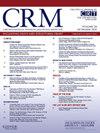Five-year clinical outcomes of STEMI patients treated with a pre-specified bioresorbable vascular scaffold implantation technique: Final results of the BVS STEMI STRATEGY-IT
IF 1.9
Q3 CARDIAC & CARDIOVASCULAR SYSTEMS
引用次数: 0
Abstract
Background
Data on Absorb bioresorbable vascular scaffold (BVS) use in patients presenting with ST-segment elevation myocardial infarction (STEMI) are limited. Furthermore, Absorb studies including STEMI patients lacked a prespecified implantation technique to optimize BVS deployment. This study examines the 5-year outcomes of BVS in STEMI patients using an optimized implantation strategy and the impact of prolonged dual antiplatelet therapy (DAPT).
Methods
The BVS STEMI STRATEGY-IT study is a prospective, non-randomized, single-arm multicenter trial (NCT02601781). It involved 505 STEMI patients undergoing primary percutaneous coronary intervention with a predefined BVS implantation protocol. Key endpoints were a 5-year device-oriented composite endpoint (DOCE) of cardiac death, target-vessel myocardial infarction (TV-MI), and ischemia-driven target lesion revascularization (ID-TLR). The study also compared outcomes based on DAPT duration (36 months vs. shorter).
Results
502 (99.4 %) patients completed the 5-year follow-up. DOCE rate was 2.4 %. ID-TLR, TV-MI, and cardiac death rates were 1.6 %, 0.8 %, and 0.6 %, respectively. No DOCE occurred between three and five years. Scaffold thrombosis (ScT) was 1 %, all occurring within 24 months. Longer-term DAPT significantly reduced DOCE (1.3 % vs. 4.3 %; HR: 0.29; 95 % CI: 0.1–0.9; p = 0.03) driven by a lower rate of TV-MI (0 % vs. 2.2 %; p = 0.018) compared to shorter-term DAPT, as well as ScT (0 % vs 2.7 %, p = 0.007).
Conclusions
This study shows favorable 5-year outcomes for BVS in selected STEMI patients with an optimized implantation strategy. Prolonged DAPT further improved outcomes, emphasizing its role in reducing adverse events during scaffold resorption. Further research is needed to assess newer-generation bioresorbable devices.
采用预先指定的生物可吸收血管支架植入技术治疗 STEMI 患者的五年临床疗效:BVS STEMI STRATEGY-IT 的最终结果。
背景:在ST段抬高型心肌梗死(STEMI)患者中使用Absorb生物可吸收血管支架(BVS)的数据有限。此外,包括 STEMI 患者在内的 Absorb 研究缺乏用于优化 BVS 部署的预设植入技术。本研究探讨了 STEMI 患者使用优化植入策略的 BVS 5 年疗效以及延长双联抗血小板疗法(DAPT)的影响:BVS STEMI STRATEGY-IT 研究是一项前瞻性、非随机、单臂多中心试验(NCT02601781)。505 名 STEMI 患者接受了预定义 BVS 植入方案的经皮冠状动脉介入治疗。关键终点是心源性死亡、靶血管心肌梗死(TV-MI)和缺血驱动靶病变血运重建(ID-TLR)的5年设备导向复合终点(DOCE)。研究还比较了 DAPT 持续时间(36 个月与更短)的结果:502名患者(99.4%)完成了5年随访。DOCE率为2.4%。ID-TLR、TV-MI和心源性死亡发生率分别为1.6%、0.8%和0.6%。三至五年内未发生 DOCE。支架血栓 (ScT) 发生率为 1%,均发生在 24 个月内。与短期DAPT相比,长期DAPT可显著降低DOCE(1.3% vs. 4.3%;HR:0.29;95 % CI:0.1-0.9;p = 0.03),原因是TV-MI(0% vs. 2.2%;p = 0.018)和ScT(0% vs. 2.7%,p = 0.007)发生率较低:本研究显示,在选定的 STEMI 患者中,采用优化植入策略进行 BVS 治疗的 5 年预后良好。延长 DAPT 进一步改善了预后,强调了其在减少支架再吸收期间不良事件方面的作用。评估新一代生物可吸收装置还需要进一步的研究。
本文章由计算机程序翻译,如有差异,请以英文原文为准。
求助全文
约1分钟内获得全文
求助全文
来源期刊

Cardiovascular Revascularization Medicine
CARDIAC & CARDIOVASCULAR SYSTEMS-
CiteScore
3.30
自引率
5.90%
发文量
687
审稿时长
36 days
期刊介绍:
Cardiovascular Revascularization Medicine (CRM) is an international and multidisciplinary journal that publishes original laboratory and clinical investigations related to revascularization therapies in cardiovascular medicine. Cardiovascular Revascularization Medicine publishes articles related to preclinical work and molecular interventions, including angiogenesis, cell therapy, pharmacological interventions, restenosis management, and prevention, including experiments conducted in human subjects, in laboratory animals, and in vitro. Specific areas of interest include percutaneous angioplasty in coronary and peripheral arteries, intervention in structural heart disease, cardiovascular surgery, etc.
 求助内容:
求助内容: 应助结果提醒方式:
应助结果提醒方式:


